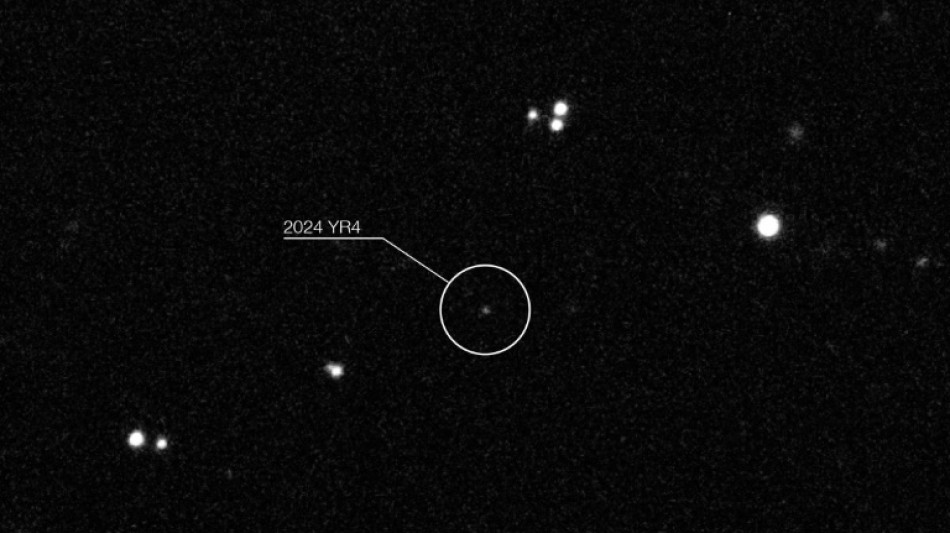
-
 Asian stocks wobble as US shutdown rally loses steam
Asian stocks wobble as US shutdown rally loses steam
-
UK unemployment jumps to 5% before key govt budget

-
 Japanese 'Ran' actor Tatsuya Nakadai dies at 92
Japanese 'Ran' actor Tatsuya Nakadai dies at 92
-
AI stock boom delivers bumper quarter for Japan's SoftBank

-
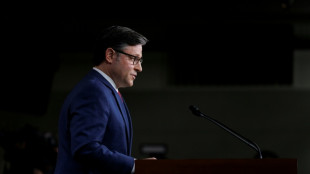 Asian stocks struggle as US shutdown rally loses steam
Asian stocks struggle as US shutdown rally loses steam
-
India probes deadly Delhi blast, vows those responsible will face justice

-
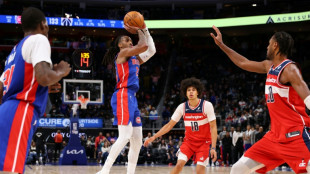 Pistons win streak hits seven on night of NBA thrillers
Pistons win streak hits seven on night of NBA thrillers
-
US state leaders take stage at UN climate summit -- without Trump

-
 Burger King to enter China joint venture, plans to double stores
Burger King to enter China joint venture, plans to double stores
-
Iraqis vote in general election in rare moment of calm
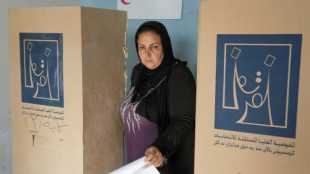
-
 Philippines digs out from Typhoon Fung-wong as death toll climbs to 18
Philippines digs out from Typhoon Fung-wong as death toll climbs to 18
-
'Demon Slayer' helps Sony hike profit forecasts

-
 Who can qualify for 2026 World Cup in next round of European qualifiers
Who can qualify for 2026 World Cup in next round of European qualifiers
-
Ireland's climate battle is being fought in its fields

-
 Sony hikes profit forecasts on strong gaming, anime sales
Sony hikes profit forecasts on strong gaming, anime sales
-
End to US government shutdown in sight as stopgap bill advances to House

-
 'Western tech dominance fading' at Lisbon's Web Summit
'Western tech dominance fading' at Lisbon's Web Summit
-
Asian stocks rise as record US shutdown nears end

-
 'Joy to beloved motherland': N.Korea football glory fuels propaganda
'Joy to beloved motherland': N.Korea football glory fuels propaganda
-
Taiwan coastguard faces China's might near frontline islands

-
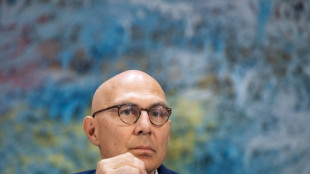 Concentration of corporate power a 'huge' concern: UN rights chief
Concentration of corporate power a 'huge' concern: UN rights chief
-
Indian forensic teams scour deadly Delhi car explosion
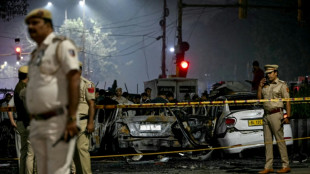
-
 Trump says firebrand ally Greene has 'lost her way' after criticism
Trump says firebrand ally Greene has 'lost her way' after criticism
-
Show shines light on Mormons' unique place in US culture

-
 Ukraine, China's critical mineral dominance, on agenda as G7 meets
Ukraine, China's critical mineral dominance, on agenda as G7 meets
-
AI agents open door to new hacking threats

-
 Syria joins alliance against Islamic State after White House talks
Syria joins alliance against Islamic State after White House talks
-
As COP30 opens, urban Amazon residents swelter

-
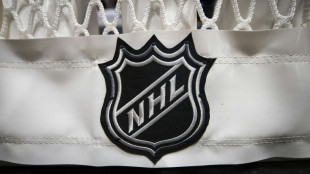 NHL unveils new Zurich office as part of global push
NHL unveils new Zurich office as part of global push
-
Szalay wins Booker Prize for tortured tale of masculinity

-
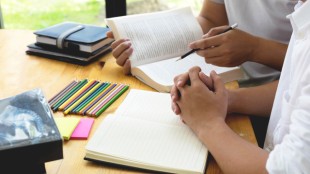 Star Copper Confirms Copper Creek Mineralized Zone
Star Copper Confirms Copper Creek Mineralized Zone
-
Nano One Provides an Update on Recent Corporate Developments & Reports Third Quarter 2025 Results

-
 Tocvan Announces Maiden Drill Program Underway at North Block Gran Pilar Gold-Silver Project
Tocvan Announces Maiden Drill Program Underway at North Block Gran Pilar Gold-Silver Project
-
'Netflix House' marks streaming giant's first theme park
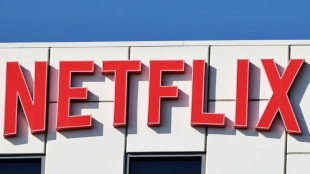
-
 UN warns of rough winter ahead for refugees
UN warns of rough winter ahead for refugees
-
Brazil's 'action agenda' at COP30 takes shape

-
 Trump threatens $1 billion action as BBC apologises for edit error
Trump threatens $1 billion action as BBC apologises for edit error
-
Sinner dominates injury-hit Auger-Aliassime in ATP Finals opener

-
 Trump hails Syria's 'tough' ex-jihadist president after historic talks
Trump hails Syria's 'tough' ex-jihadist president after historic talks
-
Syria's ex-jihadist president meets Trump for historic talks
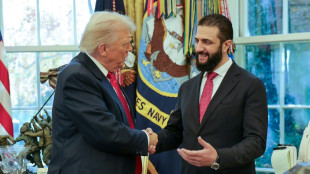
-
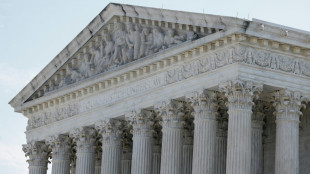 Top US court hears case of Rastafarian whose hair was cut in prison
Top US court hears case of Rastafarian whose hair was cut in prison
-
US mediator Kushner and Netanyahu discuss phase two of Gaza truce

-
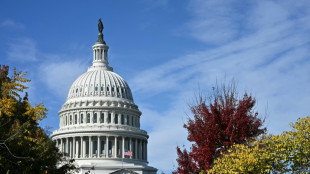 End to US government shutdown in sight as Democrats quarrel
End to US government shutdown in sight as Democrats quarrel
-
Trump threatens air traffic controllers over shutdown absences
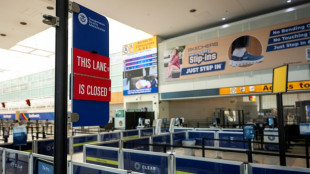
-
 US to remove warnings from menopause hormone therapy
US to remove warnings from menopause hormone therapy
-
UK water firm says 'highly likely' behind plastic pellet pollution incident
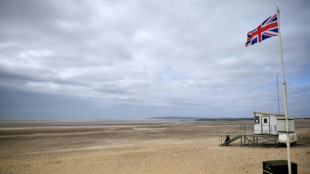
-
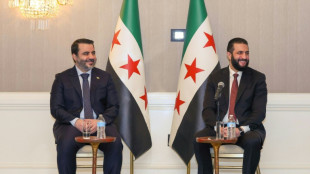 Syria's ex-jihadist president holds historic Trump talks
Syria's ex-jihadist president holds historic Trump talks
-
End to record-long US government shutdown in sight

-
 France's ex-leader Sarkozy says after jail release 'truth will prevail'
France's ex-leader Sarkozy says after jail release 'truth will prevail'
-
Atalanta sack coach Juric after poor start to season
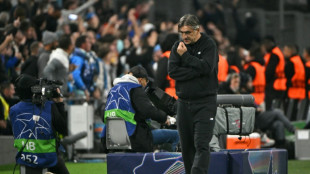

Rising odds asteroid that briefly threatened Earth will hit Moon
An huge asteroid that was briefly feared to strike Earth now has a nearly four percent chance of smashing into the Moon, according to new data from the James Webb Space Telescope.
The asteroid, thought to be capable of levelling a city, set a new record in February for having the highest chance -- 3.1 percent -- of hitting our home planet than scientists have ever measured.
Earth's planetary defence community leapt into action and further observations quickly ruled out that the asteroid -- called 2024 YR4 -- will strike Earth on December 22, 2032.
But the odds that it will instead crash into Earth's satellite have been steadily rising.
After the Webb telescope turned its powerful gaze towards the asteroid last month, the chance of a Moon shot is now at 3.8 percent, NASA said.
"There is still a 96.2 percent chance that the asteroid will miss the Moon," NASA said in a statement on Thursday.
Richard Moissl, head of the European Space Agency's planetary defence office, told AFP that this aligned with their internal estimates of around four percent.
The new Webb data also shed light on the size of the space rock, which was previously estimated to be between 40 and 90 metres (131 to 295 feet).
It is now believed to be 53 to 67 metres, roughly the height of a 15-storey building.
This is significant because it is bigger than the 50-metre threshold for activating planetary defence plans.
If the asteroid still had a more than one percent chance of hitting Earth, "the development of one or more deflection missions would already be starting now", Moissl said.
There are a range of ideas for how Earth could fend off an oncoming asteroid, including nuclear weapons and lasers.
But only one has been tested on an actual asteroid. In 2022, NASA's DART mission successfully altered a harmless asteroid's trajectory by smashing a spacecraft into it.
- 'Perfect opportunity' -
While no one wanted to need to test Earth's defences on the potentially hugely destructive asteroid 2024 YR4, many scientists are hoping it will strike the Moon.
"The possibility of getting a chance for an observation of a sizeable Moon impact is indeed an interesting scenario from a scientific point of view," Moissl said.
It could offer up a range of information that would be "valuable for planetary defence purposes," he added.
Mark Burchell, a space scientist at the UK's University of Kent, told New Scientist that a Moon hit would be "a great experiment and a perfect opportunity".
And on Earth, "telescopes would certainly see it, I would say, and binoculars might see it," he added.
The asteroid is the smallest object ever targeted by the Webb telescope.
Webb's measurements of the space rock's thermal data indicate that it "does not share properties observed in larger asteroids", the European Space agency said in a statement.
"This is likely a combination of its fast spin and lack of fine-grained sand on its surface," it said, adding that this was more common in fist-sized asteroids.
More information will come when Webb again observes the asteroid again next month.
L.Mason--AMWN

